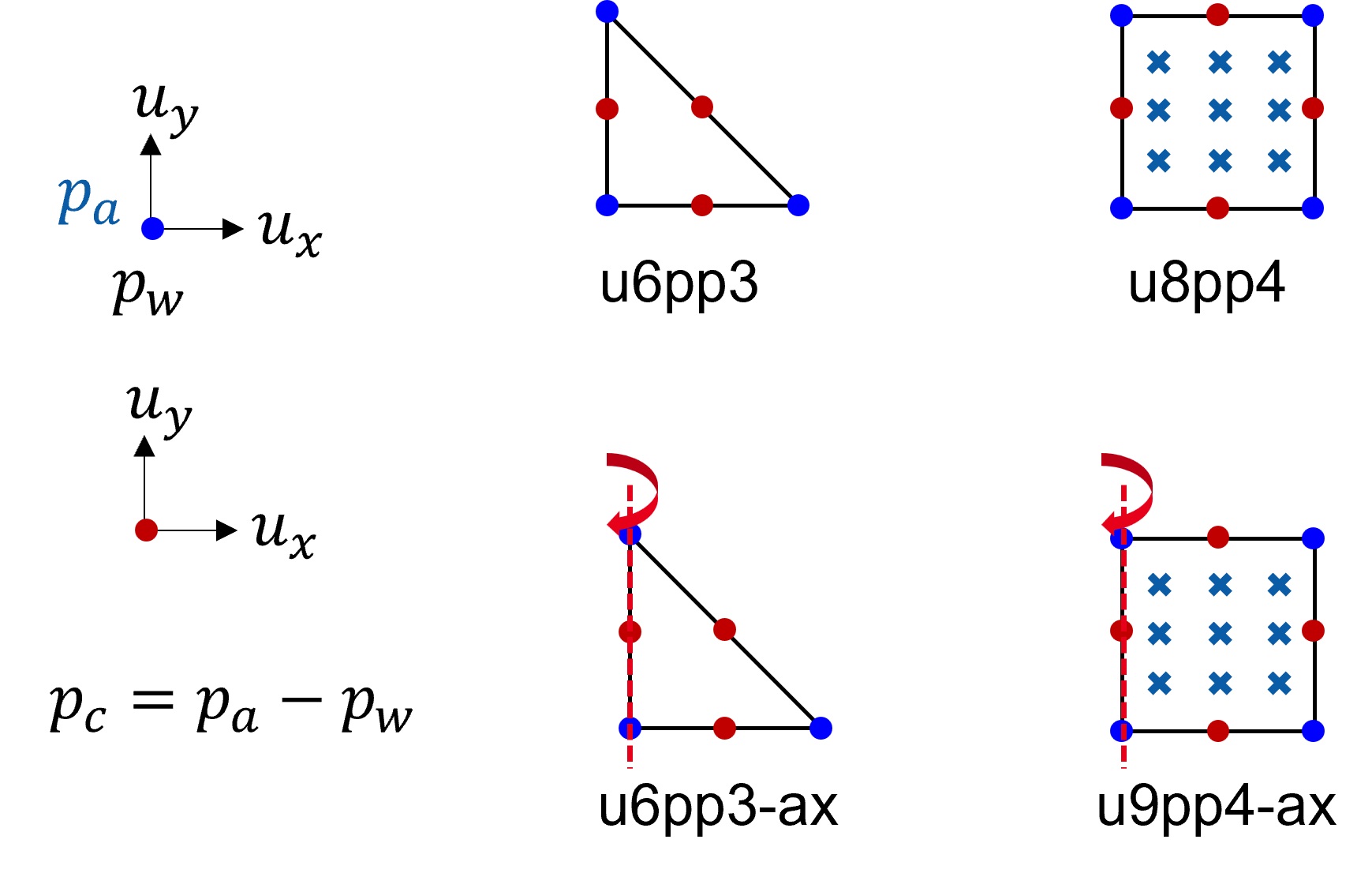Three-phase porous solid elements (u-p-p elements)

These elements are implemented for simulating the response of a three-phase solid-fluid fully coupled material, based on Theory of Porous Media. The porous medium is assumed to be composed of one solid phase (e.g. the grain skeleton) and two pore-fluids (e.g. water and air). The following elements correspond to the "full" formulation, where both pore-fluids can be controlled
In the "full" formulation of the three-phase elements both pore-fluids are discretized at the nodes of the element. Thus, each node has 4 degrees of freedom, the solid displacements \(u_1\) and \(u_2\) as well as the pore-fluid pressures \(p^w\) and \(p^w\). The capillary pressure is calculated using \(p^c=p^a-p^w\). The following elements are available:
2D Elements
| Element label | Dim. | Shape | Nodes | Interpolation Order | nIP* | Remarks |
|---|---|---|---|---|---|---|
u6pp3 |
2D | triangle | 6 | quadratic | 3 | (1), (2) |
u8pp4 |
2D | rectangle | 8 | quadratic | 9 | (1), (2) |
Axisymmetric Elements
| Element label | Dim. | Shape | Nodes | Interpolation Order | nIP* | Remarks |
|---|---|---|---|---|---|---|
u6pp3-ax |
axisym. | triangle | 6 | quadratic | 3 | (1), (2) |
u8pp4-ax |
axisym. | rectangle | 8 | quadratic | 9 | (1), (2) |
Remarks
| * | nIP = number of integration points |
|---|---|
| (1) | Due to the full integration, the element will behave badly for isochoric material behavior. This shortcoming is more pronounced for linear interpolated elements and less pronounced for quadratic interpolated ones. |
| (2) | Taylor-Hood formulation: The solid displacements \(u\) are interpolated using quadratic shape functions, whereas the pore-fluid pressures \(p^w\) and \(p^a\) are interpolated using linear shape functions. |
Notice that these elements require the definition of a three-phase material: (*Material,..., Phases=3) as described in *Material. In addition, a saturation-suction relation and relative permeability models have to be prescribed.